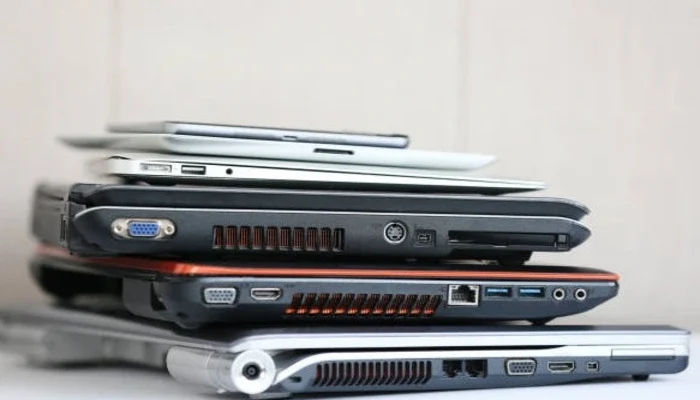In today’s fast-paced, tech-driven world, it’s a common scenario: a new device captures your imagination and makes your current gadgets feel obsolete. However, the arrival of cutting-edge technology brings a persistent question to the forefront — what should be done with the older, yet perfectly serviceable electronics?
Understanding and acting on where to get rid of old TVs and other outdated gadgets sustainably is no longer optional it’s essential. This responsibility is pivotal in reducing the environmental impact of e-waste while conserving materials that are steadily becoming limited.
Introduction to Electronics Disposal
Electronics have woven into almost every aspect of daily life, from work and entertainment to communication and education. Each year, technology advances rapidly, introducing new devices that outshine their predecessors.
This continual upgrade fosters an overwhelming consumption cycle, leading to the global rise of electronic waste, or e-waste. As the home and workplace become studies in technological evolution, understanding how to dispose of outdated electronics responsibly becomes not just a choice but a crucial action for any environmentally conscious individual or business.
Why Proper E-Waste Disposal Matters
E-waste represents a significant environmental challenge worldwide, being one of the fastest growing waste streams. In 2019 alone, approximately 53.6 million metric tons of e-waste were generated across the globe, and this number is expected to rise as digitalization and technology adoption continue their upward trajectory.
Proper disposal of these electronics is vital due to their hazardous materials, such as lead, mercury, and cadmium, which can infiltrate and contaminate the soil and water supply. Beyond toxicity concerns, e-waste is also a rich source of precious metals like gold, silver, and copper.
By devising and implementing effective recycling strategies, we can significantly reduce the need for new raw material extraction and cut down the environmental cost associated with such mining activities.
Common Methods for Disposing of Electronics
A variety of methods are available to consumers and businesses interested in responsibly disposing of electronics:
- Donation: Devices that still function can be invaluable to local charities, educational facilities, and community centers. Donating them supports technology access in underfunded communities and educational institutions, extending the life and service of these gadgets.
- Recycling: Leveraging recommended recycling programs, such as those highlighted by the EPA, ensures that electronic waste is dismantled and processed in an environmentally sound manner.
- Selling: Another responsible approach is selling operational electronics through second-hand markets or platforms like eBay or Craigslist. This practice not only diverts electronics from landfills but also aids in recouping a portion of the original investment.
The Role of E-Waste Recycling Centers
E-waste recycling centers are indispensable within the ecosystem of responsible electronics disposal.
They’ve stepped up as pivotal players in reducing the environmental footprint of discarded devices. Utilizing centers detailed by platforms, emphasizes the importance of reducing waste and recirculating essential materials back through manufacturing cycles, which conserves both the ecosystem and natural resources.
Benefits of Manufacturer Take-Back Programs
As part of an effort to tilt the scales against burgeoning e-waste, many electronics manufacturers have instituted take-back programs. These initiatives invite customers to return their obsolete electronics for refurbishment or recycling under stringent environmental standards.
Such programs represent a paradigm shift toward circular economy models, where every returned device contributes to a closed-loop system. These programs mitigate environmental impact and provide manufacturers with a sustainable supply of raw materials needed for new products, reducing overall manufacturing costs while enhancing corporate social responsibility.
Environmental Impact of Improper Disposal
The repercussions of improper e-waste disposal extend far beyond immediate vicinity, posing significant threats to global ecology. When electronic gadgets are disposed of irresponsibly, they can leak harmful materials into the surrounding environment, contaminating the water and soil and harming the local wildlife.
This contamination can permeate through agricultural zones, directly affecting food production and quality.
Addressing improper disposal alleviates ecological stress and establishes a protective framework for human and environmental health, a necessity for sustainable development.
How to Get Started with Safe Electronics Disposal
Integrating responsible electronic disposal habits into your lifestyle entails several straightforward steps:
- Assess: Begin by evaluating your device’s condition. If repair or repurposing is viable, pursue these paths before considering disposal. This approach prolongs the life of your device while decreasing waste.
- Locate a Center: Utilize reliable resources to find accessible e-waste recycling centers or participating manufacturer and retailer take-back programs.
- Follow Legal Guidelines: Abide by local e-waste disposal regulations and guidelines, exhibiting personal and environmental accountability. This adherence underscores the ethical commitment to the collective wellbeing of our planet and its inhabitants.
For detailed advice and resources, organizations provide comprehensive support for individuals and businesses eager to manage e-waste adeptly. Together, by amplifying awareness and practicing informed disposal, we edge closer to a sustainable future where technology and the environment coexist in harmony.
Pedrovazpaulo Coaching: Mastering the Art of Leadership









Comments